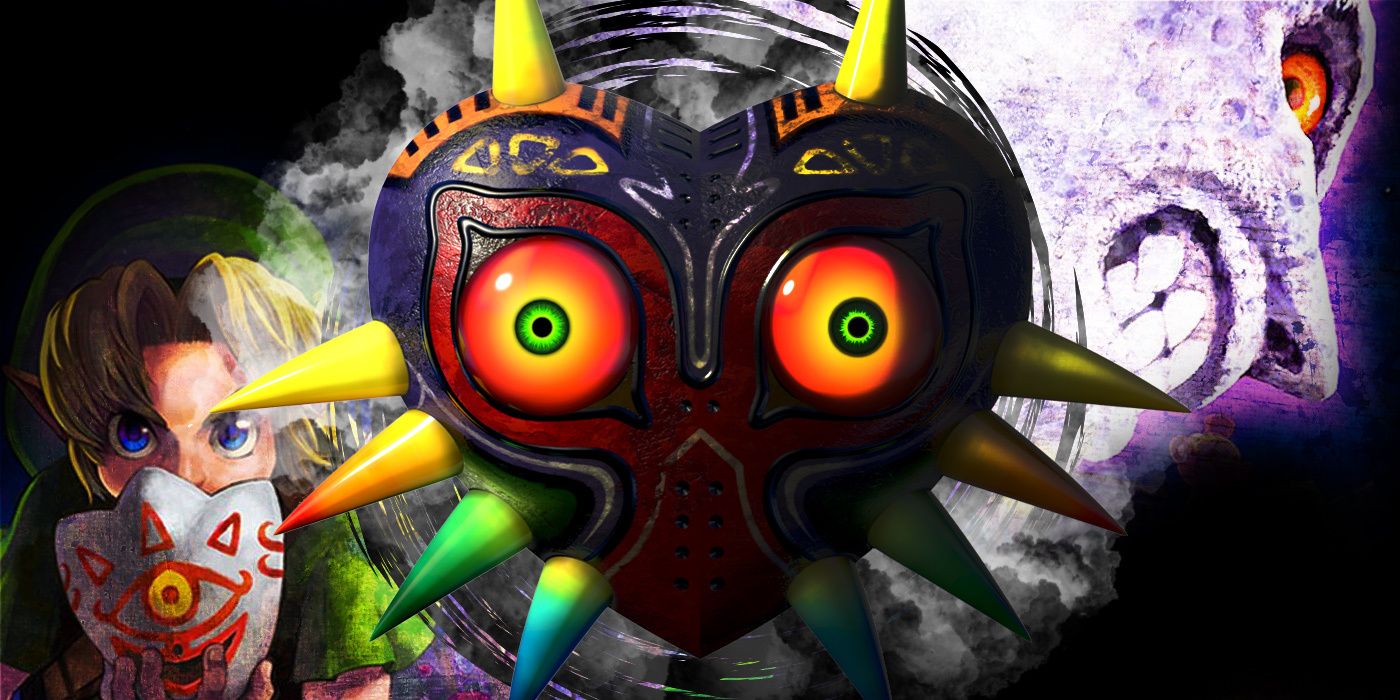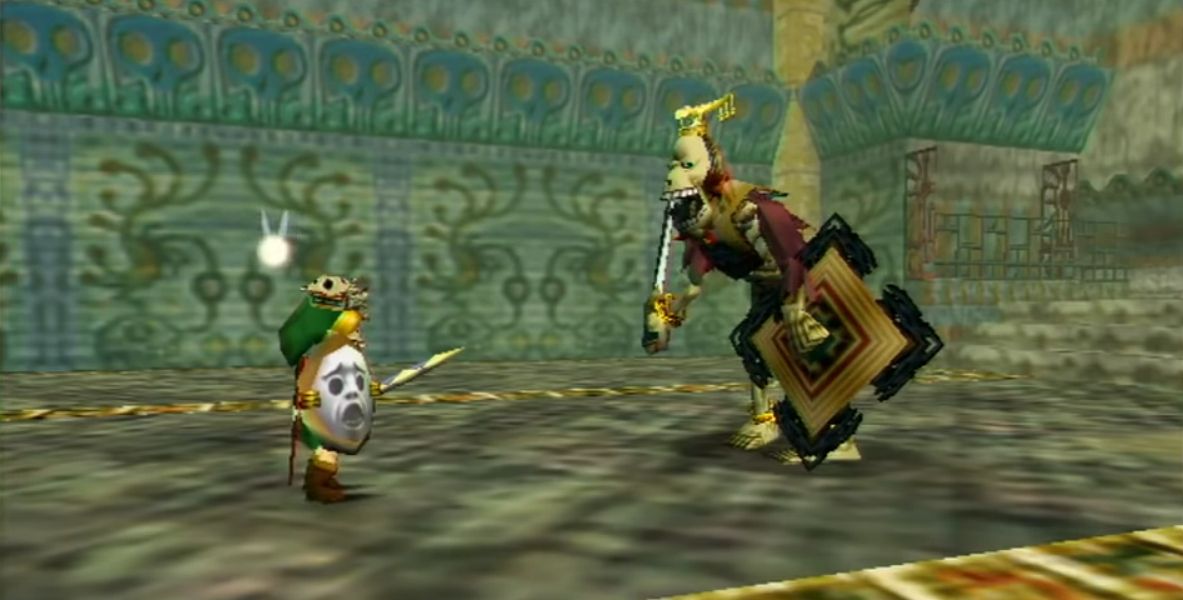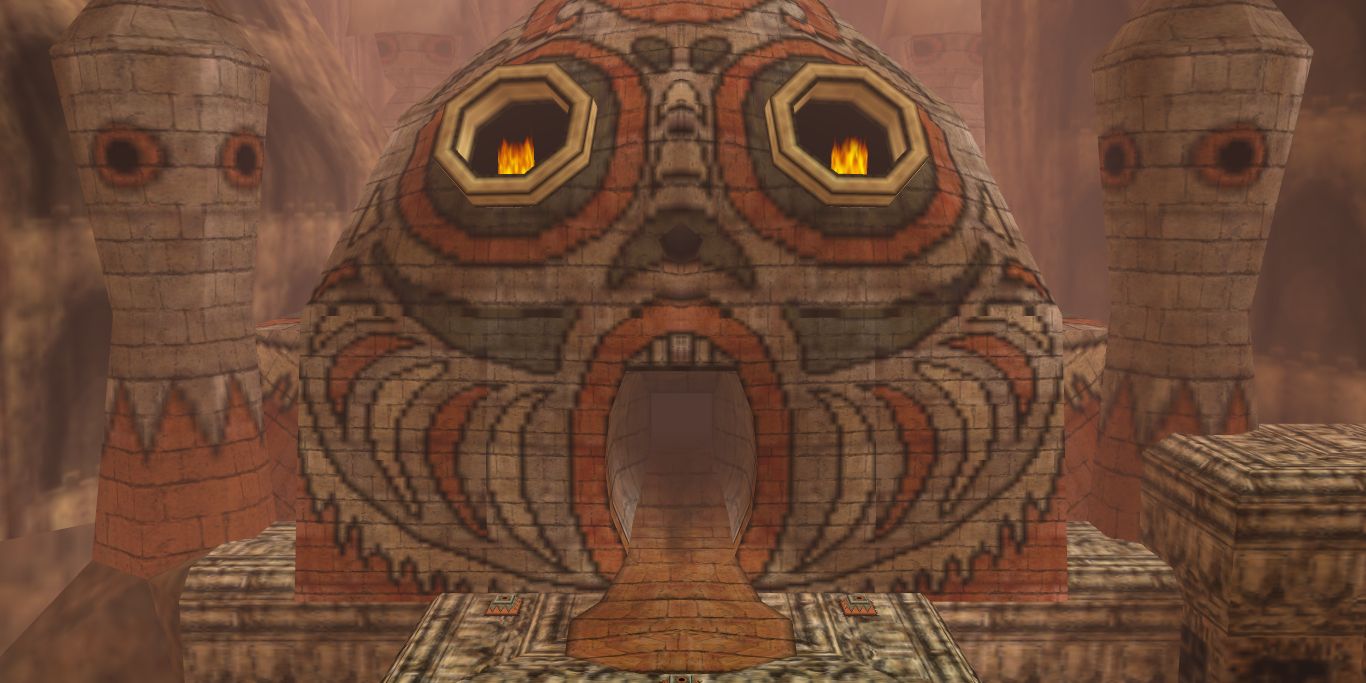The Legend of Zelda: Majora’s Mask was first released in 2000, and since then it’s become a classic among fans of the franchise. It was first released for the Nintendo 64, and has been re-released for a variety of platforms, including the Gamecube, Wii, Wii U, and 3DS, and soon it’s going to reach the newest generation of Nintendo consoles too, via the Switch Online Expansion Pass subscription model. The game borrowed fairly heavily from its 1998 predecessor, The Legend of Zelda: Ocarina of Time, in terms of gameplay, graphics, and musical scoring. However, there was a newfound darkness threaded through Majora’s Mask that was previously absent from most titles in the franchise. This made Majora’s Mask into a turning point among Legend of Zelda games, and its popularity possibly impacted the course of games yet to come.
The aim of Majora’s Mask is to rescue the town of Termina from the “terrible fate” of having the moon fall and crash into it. As always, you play as Link, the voiceless hero of every Legend of Zelda game, navigating Termina and ultimately saving the day. The unsettling world of Termina is reminiscent of a nightmare. The name Termina shares the same etymology as the word “Terminal”, to mean an ending – fitting for a calamitous, apocalyptic world. Everything in the game is constructed and engineered in a way to remind the player that the world is nearly over, and you need to do everything you can to stop it. The world-building in the game is extremely unnerving, particularly for a franchise that’s better known for its lush, green kingdoms and magical waterfalls than a desaturated, dystopian landscape. All throughout the game, the moon is hanging low over the town, getting closer and closer with each passing hour. If you don’t complete all of the challenges across the world in the in-game three-day cycle, then the world ends and you’re forced to start over. Being reminded of the impending doom of the town for the entire game makes for a pretty harrowing gaming experience. There is a way around it, though: time travel.
Majora’s Mask has several unique mechanics that make the game immensely special. First off, you need to don different magical masks to transform into other creatures from the shared universe, like the leafy Deku, the volcano-dwelling Gorons, and the aquatic Zora. This lets Link take on different forms and powers, enabling him to complete puzzles that would otherwise be impossible. The second bizarre mechanic in the game is the use of time-travel. While Majora’s Mask is far from the first Legend of Zelda game to utilize time-travel – see Ocarina of Time and A Link to the Past, to name a couple – Majora’s Mask does use it a little differently. In the previous games, when you time-travel you’re transported into the same world in a totally different time-frame. In Majora’s Mask, though, you enter a time-loop to strive against the imminent apocalypse, restarting the three-day cycle each time.
The gameplay mechanics, dark atmosphere, and storytelling used in Majora’s Mask borrows pretty heavily from a now-popular genre that was on the rise during the game’s development: survival horror. Survival horror is the intersection of action-adventure games and horror games that center on navigating and withstanding terrible conditions, often of the apocalyptic or dystopian varieties. Although games that fit this description have been around since the 1980s, with titles like Sweet Home and Nostromo, the term was only coined in the mid-to-late 1990s on the back of the release of the first Resident Evil game. After this, the world seemed to go wild for survival horror, and a whole raft of other survival horror titles sprung up. Arguably, Majora’s Mask is the Legend of Zelda franchise’s answer to the hype.
When playing Majora’s Mask, you’re never given a quiet, relaxed moment to forget about the mortality of yourself and everyone else in the town around you. Survival is constantly at the forefront of your mind, similarly to how it is when playing other horror games, firmly making the game into the survival horror of the franchise. This sense of panic embedded into the game really sets it apart from the rest of the series. In so many of the other games, you’re given a little spare time to play with when exploring the worlds, whether that’s spent fishing, playing games of luck with the Hyrule vendors, or other side quests. The sense of urgency completely alters the nature of the game in Majora’s Mask, making it a far more frightening experience than the vast majority of games in the series.
While survival horror can definitely be more combat and action-oriented, like the House of the Dead series, it’s also historically been angled a little more towards strategy and puzzle focused mechanisms, as seen with games like Resident Evil. While Majora’s Mask has its fair share of action when battling the assortment of enemies found in the creepy world of Termina, like Poe and ReDeads, like any other game in the Legend of Zelda-verse it’s firmly a strategy game. Like in any good Zelda game, or in fact like any survival horror, throughout the game you need to complete all kinds of difficult environmental puzzles and put your problem-solving skills to the test. The constant need to focus on survival and keep an eye on the time limits set within the game makes for a particularly hard set of puzzles, too.
The gameplay mechanics and eerie universe aren’t the only ways that Majora’s Mask is haunting, either. The soundtrack is deeply unnerving, too. Reversed tracks, discordance and dissonance is used liberally, to haunting effects. The emotional power of the music is particularly notable when you consider the limited technological capabilities of the N64’s soundcard. It used MIDI technology, which consists of small, highly controlled bites of sound and synthesis. Even listening back to the soundtrack over twenty years later, the nostalgia can’t block how unsettling more than half of the familiar themes and cues are. Even the opening theme alone is unnerving, setting the tone perfectly for an apocalyptic survival horror.
While Majora’s Mask was perhaps the series’ first foray into horror, it wasn’t its last. In 2006, The Legend of Zelda: Twilight Princess was released for the Gamecube and Wii. The game made waves among fans for its darker tone and storytelling, alongside its alarming enemies. Arguably, Majora’s Mask opened the doors for darker games set in the same universe. The other games in the franchise being released at a similar time to Twilight Princess were of a very different style and tone, with bright, colourful, stylistically low-poly graphics and cutesy character designs, like The Legend of Zelda: Wind Waker. Without Majora’s Mask’s success, would Nintendo have taken a punt on releasing what went on to be a popular, much-beloved game? Considering how different it is to the rest of the series, it’s difficult to say.



